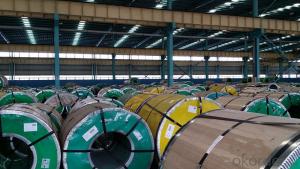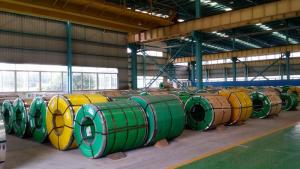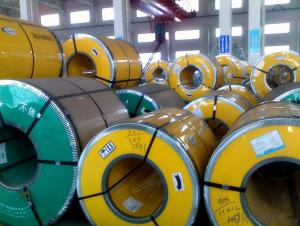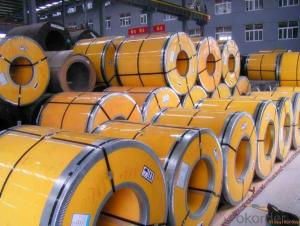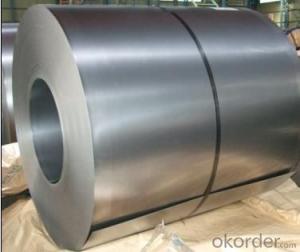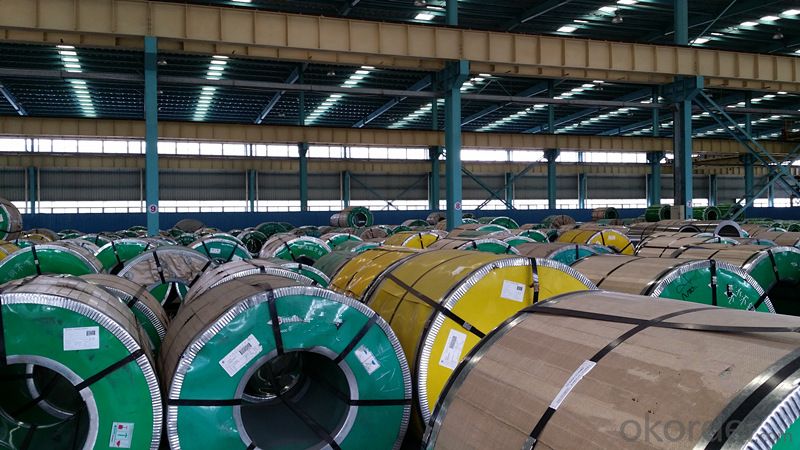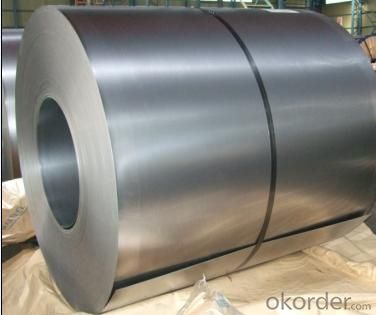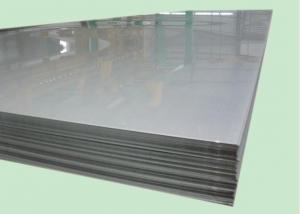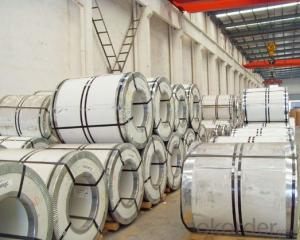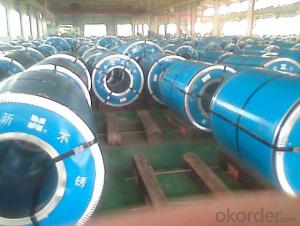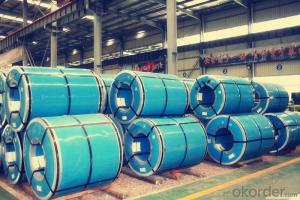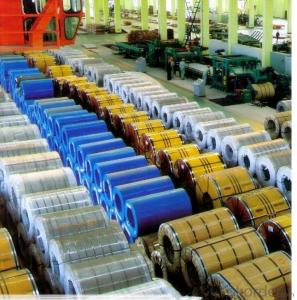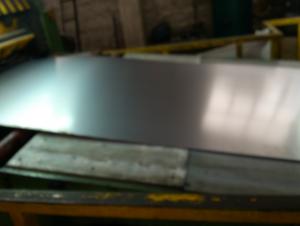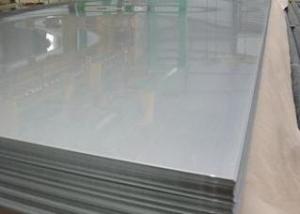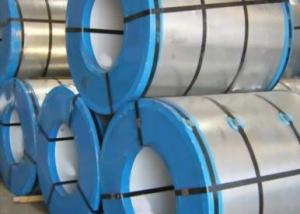Cold Rolled Stainless Steel Coil 304 Grade BA Finish
- Loading Port:
- China Main Port
- Payment Terms:
- TT OR LC
- Min Order Qty:
- -
- Supply Capability:
- -
OKorder Service Pledge
OKorder Financial Service
You Might Also Like
Cold Rolled Stainless Steel Coil 304 Grade BA Finish
Packaging Detail:standard export packing or as customer's requirements
Delivery Detail:7-15 days after the order
MOQ: 25mt
Standard: | AISI,ASTM,BS,DIN,GB,JIS | Grade: | 304 | Thickness: | 0.3-3.0mm |
Place of Origin: | China Mainland | Brand Name: | CNBM | Model Number: | 304 |
Type: | Steel Coil | Technique: | Cold Rolled | Surface Treatment: | 2B, BA |
Application: | Medical instruments, building, chemical food industry agriculture | Width: | 500-2000mm | Length: | Coil |
finish: | BA | item: | 304 cold rolled stainless steel coil | density: | 7.93 |
Cold Rolled Stainless Steel Coil 304 Grade BA Finish
Chemical composition: |
| ||||||
C | Si | Mn | Cr | Ni | S | P | |
≤0.07 | ≤1.0 | ≤2.0 | 18.0~20.0 | 8.0~11.0 | ≤0.03 | ≤0.035 | |
mechanical properties: |
| ||||||
Tensile strength σb (MPa) | Conditions yield strength 0.2 sigma (MPa) | Elongation δ5 (%) | Section shrinkage (%) | Hardness | |||
520 | 205 | 40 | 60 | ≤1 | |||
- Q: Are stainless steel strips resistant to intergranular corrosion?
- Stainless steel strips generally possess resistance against intergranular corrosion. This is due to the presence of at least 10.5% chromium in stainless steel, which creates a protective oxide layer on the steel's surface. This oxide layer functions as a barrier, preventing the infiltration of oxygen and moisture to the underlying metal and averting corrosion. Moreover, stainless steel strips often contain other alloying elements like nickel, molybdenum, or titanium, further enhancing their corrosion resistance. However, it is crucial to acknowledge that the susceptibility to intergranular corrosion may vary based on the specific stainless steel grade and the environmental conditions it is exposed to. Certain grades of stainless steel may be prone to intergranular corrosion in specific scenarios, such as elevated temperatures or certain chemical surroundings. Consequently, it is imperative to select the appropriate stainless steel grade according to the particular application and environmental conditions to ensure optimal corrosion protection.
- Q: How do you prevent intergranular corrosion of stainless steel strips?
- To avoid intergranular corrosion of stainless steel strips, several steps can be taken: 1. Opt for low carbon grades: Intergranular corrosion occurs when chromium carbides precipitate at grain boundaries due to prolonged exposure to high temperatures. By using low carbon grades like Type 304L or Type 316L, the carbon content is minimized, reducing carbide formation and preventing intergranular corrosion. 2. Employ heat treatment: After welding or other high-temperature processes, it is essential to properly heat treat stainless steel strips to restore their corrosion resistance. This process, known as solution annealing or sensitization treatment, involves heating the material to a specific temperature range and rapidly cooling it to dissolve carbides and prevent their precipitation at grain boundaries. 3. Utilize pickling and passivation: Pickling involves the use of acid solution to eliminate impurities or contaminants from the surface of stainless steel, while passivation creates a protective oxide layer that enhances corrosion resistance. Regular pickling and passivation treatments can help prevent intergranular corrosion by eliminating potential corrosion sites and improving overall surface condition. 4. Avoid exposing stainless steel strips to high temperatures: Prolonged exposure to high temperatures can lead to sensitization and subsequent intergranular corrosion. If unavoidable, thermal barriers such as insulation or coatings can be used to minimize direct contact between stainless steel and elevated temperatures. 5. Employ corrosion inhibitors: Applying corrosion inhibitors, such as specialized coatings or inhibitors in the working environment, can provide an additional layer of protection against intergranular corrosion. These inhibitors work by forming a protective film on the surface of stainless steel, preventing the attack of corrosive agents and reducing the risk of intergranular corrosion. Overall, preventing intergranular corrosion of stainless steel strips involves a combination of material selection, appropriate heat treatment, surface treatment, and protective measures. By implementing these preventive measures, the risk of intergranular corrosion can be significantly reduced, ensuring the long-term durability and performance of stainless steel strips.
- Q: Are stainless steel strips resistant to UV radiation?
- Stainless steel strips are generally resistant to UV radiation. The reason for this is that stainless steel has excellent corrosion resistance, which also applies to UV radiation. The presence of chromium in stainless steel creates a protective oxide layer on the surface, preventing significant damage or degradation from UV radiation. Stainless steel is commonly used in outdoor settings where it is exposed to sunlight and UV radiation, such as architectural structures, automotive parts, and marine equipment. This further demonstrates its resistance to UV radiation. However, it's worth noting that the specific resistance of stainless steel strips to UV radiation may vary based on the grade and quality of the stainless steel used, as well as the duration and intensity of the UV exposure.
- Q: Can 111 stainless steel strips be coated with anti-fouling coatings?
- Yes, 111 stainless steel strips can be coated with anti-fouling coatings. Anti-fouling coatings are specifically designed to prevent the accumulation of marine organisms, such as algae and barnacles, on surfaces exposed to water. Stainless steel is a commonly used material in marine applications due to its corrosion resistance and durability. By applying anti-fouling coatings, the strips can be protected from fouling, ensuring their longevity and performance in marine environments.
- Q: What are the different widths available for stainless steel strips?
- A variety of widths are offered for stainless steel strips to accommodate different needs and uses. The widths can vary based on the manufacturer and type of stainless steel employed. However, common widths include 1/2 inch, 3/4 inch, 1 inch, 1.5 inches, 2 inches, and 3 inches, among others. These examples represent just a small fraction of the available widths in the market. The selection of a particular width for stainless steel strips depends on factors like the intended application, project size, and desired strength and durability. To determine the most appropriate width for your specific needs, it is advisable to seek guidance from a supplier or manufacturer.
- Q: Are 111 stainless steel strips resistant to scaling at elevated temperatures?
- 111 stainless steel strips exhibit resistance to scaling at elevated temperatures. Due to its composition and properties, 111 stainless steel is highly resistant to oxidation and scaling when exposed to high temperatures. This stainless steel variant contains a greater proportion of chromium, which generates a protective oxide layer on the strip's surface. This oxide layer functions as a shield, inhibiting the steel from reacting with oxygen and other atmospheric elements. Consequently, the integrity of the 111 stainless steel strips remains intact, enabling them to withstand scaling even under elevated temperature conditions.
- Q: What are the recommended storage conditions for 111 stainless steel strips?
- The recommended storage conditions for 111 stainless steel strips are as follows: 1. Temperature: It is recommended to store stainless steel strips in a controlled environment with a temperature range between 20°C (68°F) and 25°C (77°F). Extreme temperature fluctuations should be avoided as they can cause thermal expansion or contraction, leading to potential warping or distortion of the strips. 2. Humidity: The ideal humidity level for storing stainless steel strips is around 50%. High humidity can promote corrosion, while low humidity can cause the strips to become brittle. To maintain optimal conditions, it is advisable to store the strips in a dry location, away from moisture sources. 3. Ventilation: Adequate ventilation is crucial to prevent the accumulation of moisture or condensation on the stainless steel strips. Storing them in a well-ventilated area helps to minimize the risk of corrosion and maintain the quality of the material. 4. Protection: Stainless steel strips should be protected from exposure to chemicals, corrosive substances, and direct sunlight. It is recommended to store them in a clean and dry environment, free from any potentially damaging contaminants. Additionally, it is advisable to cover the strips with a protective layer, such as plastic or paper, to prevent scratches or surface damage. 5. Organization: Proper organization and storage practices are essential to prevent damage and facilitate easy access to the stainless steel strips. They should be stored in a horizontal position, preferably on pallets or racks, to avoid bending or warping. Labeling each strip with relevant information, such as grade, dimensions, and manufacturing date, can aid in efficient inventory management. By following these recommended storage conditions, the longevity and quality of the stainless steel strips can be ensured, minimizing the risk of corrosion, distortion, or other forms of damage.
- Q: What are the common finishes available for stainless steel strips?
- The common finishes available for stainless steel strips include brushed, mirror, satin, and matte.
- Q: Are stainless steel strips suitable for decorative etching?
- Yes, stainless steel strips are suitable for decorative etching. Stainless steel is a durable and corrosion-resistant material that lends itself well to various etching techniques. It can be etched with intricate designs, patterns, or logos, making it a popular choice for decorative purposes.
- Q: What are the different types of surface patterns for stainless steel strips?
- There are several types of surface patterns for stainless steel strips including brushed, polished, embossed, and etched patterns.
Send your message to us
Cold Rolled Stainless Steel Coil 304 Grade BA Finish
- Loading Port:
- China Main Port
- Payment Terms:
- TT OR LC
- Min Order Qty:
- -
- Supply Capability:
- -
OKorder Service Pledge
OKorder Financial Service
Similar products
Hot products
Hot Searches
Related keywords
